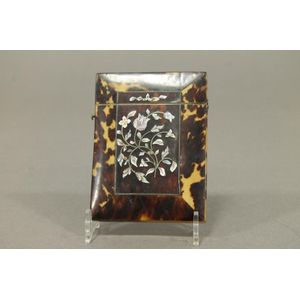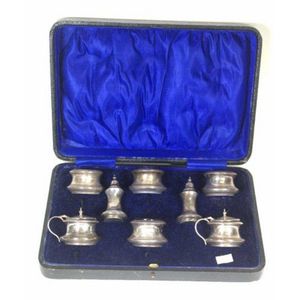Victorian Skeleton Clock with Gothic Style Movement
You must be a subscriber, and be logged in to view price and dealer details.
Subscribe Now to view actual auction price for this item
When you subscribe, you have the option of setting the currency in which to display prices to $Au, $US, $NZ or Stg.
- Victorian Period - The Victorian period of furniture and decorative arts design covers the reign of Queen Victoria from 1837 to 1901. There was not one dominant style of furniture in the Victorian period. Designers used and modified many historical styles such as Gothic, Tudor, Elizabethan, English Rococo, Neoclassical and others, although use of some styles, such as English Rococo and Gothic tended to dominate the furniture manufacture of the period.
The Victorian period was preceded by the Regency and William IV periods, and followed by the Edwardian period, named for Edward VII (1841 ? 1910) who was King of the United Kingdom and the British Dominions and Emperor of India for the brief period from 1901 until his death in 1910. - Movement - The technical name for the workings of a clock or watch, and does not include the dial or case.
- Circa - A Latin term meaning 'about', often used in the antique trade to give an approximate date for the piece, usually considered to be five years on either side of the circa year. Thus, circa 1900 means the piece was made about 1900, probably between 1895 and 1905. The expression is sometimes abbreviated to c.1900.
- Fusee - The fusee movement was used in clocks and pocket watches from the mid 17th century. The fusee is a cone shaped drum within the works that is linked to the barrel of the spring, usually by a length of chain.
As the mainspring loses its tension over time, the cone shaped barrel compensates for this by increasing the tension, by pulling the mainspring tighter, thus ensuring the time remains constant.
Use of the fusee in clocks was superseded by the "going barrel" in the mid 19th century and for pocket watches at the beginning of the 19th century.
The fusee continued to be used in marine chronometers until the 1970s.
This item has been included into following indexes:
-
clocks, type
- skeleton 78
- under glass dome 198
- meat covers / food covers / dish covers - pewter 1,606
Visually similar items

A Louis XV style gilt metal mounted marble mantel clock under dome, 19th century, the clock 48 cm high, the dome 66 cm high

Boxed pair sterling silver salts and spoons, hallmarked Birmingham 1909, 19 grams approx.

A Victorian ladies visiting card case in tortoiseshell with inlaid mother of pearl shell floral panels. Pewter stringing. Height 11 cm. Width 8 cm

Cased George V eight piece silver condiment set, Birmingham 1916, makers Henry Williamson Ltd. Including 4 open salts (3 with blue glass liners), 2 mustard pots, with blue glass liners, and 2 pepperettes.
